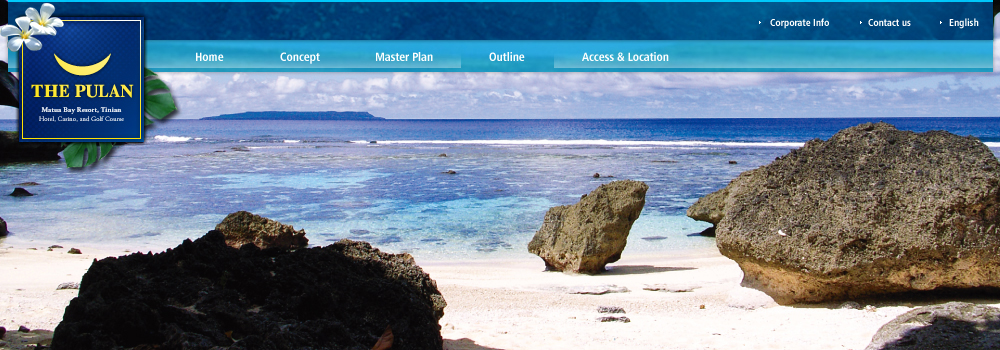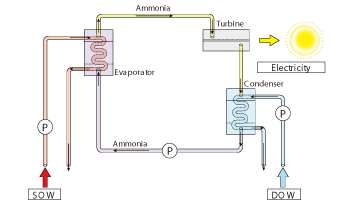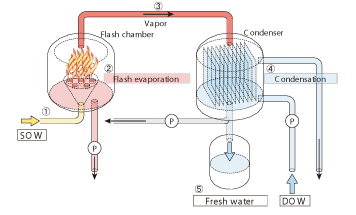The essence of environmental consciousness, The Pulan was designed to minimize environmental burden through expertise and technology.
The entire 9,000 m2 crescent-shaped roof surface of the hotel is covered with semi-transparent solar panels. Besides controlling the strong sunlight, the panels provide 25% of the hotel's electricity needs.
The 34,000 m2 Water Ring also functions as a reservoir. Five meters below the Water Ring is a rainwater collection pond that makes it possible to use this rich Tinian Island resource to provide water to the facilities. Wastewater is also treated with the latest technology. In addition, we are looking into cutting-edge uses of deep-sea water, including ocean thermal energy conversion, air conditioning, and seawater desalination. These technologies are the focus of worldwide attention as new technologies that emit little CO2.

Ocean Thermal Energy Conversion (OTEC) is a technology for generating power by converting the temperature difference between the warm surface ocean water (SOW) and the cold deep ocean water (DOW). Since no fossil fuel is needed, OTEC power generation does not discharge CO2. And with the ocean holding vast thermal energy reserves, OTEC can provide a stable supply of electricity all year round, regardless of the weather.

Ocean Thermal Energy Desalination (OTED) produces fresh water using OTEC (ocean thermal energy conversion) technology. Compared to conventional methods of desalination, OTED requires minimal energy and electrical power.

The DOW (deep ocean water) Air Conditioning System (DACS) offers major energy savings for refrigeration. Chilled fresh water moves through the buildings with the same temperatures and flow as in conventional systems. The difference is that the chilled water in this system is not cooled by conventional chillers but rather comes from the deep ocean as water that is pumped up for OTEC.

Technology developed by Xenesys Inc.


